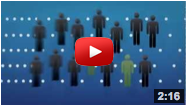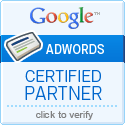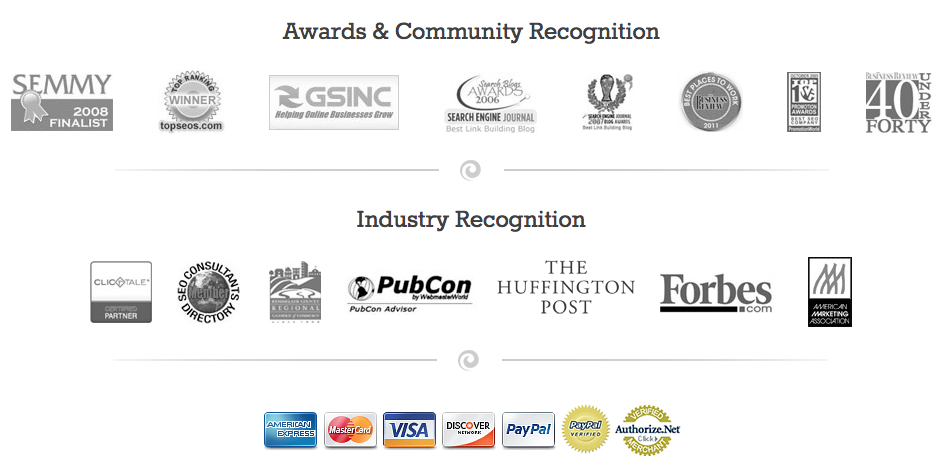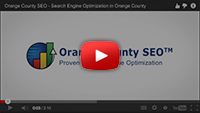Orange County SEO™ Blog
Measuring Social Media
You may find it easy to measure PPC and SEO results, but measuring social media impact is more complex. Clients may be reluctant to invest in social media campaigns, however, until they see the “hard numbers.” How can you measure social media impact in a way that your clients will understand?
One impact of social media is straightforward and easy to explain: your competitors are using it. Even if you never quantify the results of social media use, knowing that competitors are using it should be enough to engage most businesses.
The hype cycle shows the process that is seen when social media or any other technology is first “discovered” by a user. Most business owners have initial inflated expectations followed by a “trough of disillusionment.” This is followed by enlightenment as to reasonable expectations from the technology and, finally, a plateau of productivity.
Public Relations
PR used to be about crafting your message and placing it properly. To a certain extent, this is still true. Marketers send messages through social media to a receptive audience. What has changed is that the audience can immediately decide what to do with the message, and this can take control of the message out of the “owner’s” hands. However, building strong social media relationships can give business owners a measure of control over how their messages are perceived.
Can We Really Measure PR & Social Media Performance?
It is very difficult to measure the value of a relationship. It is also difficult to identify a direct, causal relationship between your social media use and the willingness of someone to buy your product.
However, if you discard the idea that you are going to get cut-and-dried numbers from social media use, you can craft a reasonable measurement of the impact social media has on your business.
While there is no industry standard for measuring social media value, tying measurement to company goals must always be your own standard. Look at your objectives and see if you have met them better since introducing social media. From there, you can derive whatever formulas you like for measuring on a per-post or per-like basis.
You may also want to measure your impact on significant demographic groups. Of the people who became followers or friends in the past month, how many were 20-to-30-year-old females? This can help you determine if your social media use is reaching the groups you want to target.
Finally, review the overall cost of social media use. Most of it is very low-cost if you are willing to put some sweat equity into it, but paid advertisements do represent part of your overall advertising budget.
Set a benchmark so you know if anything has changed over the past month, three months, year or whatever time period you choose. Social media is dynamic, so a shorter time period is usually a better indicator of your actual performance. Measure your return on investment for that time period and see if your investment in social media has caused changes to your bottom line.
Twitter Engagement: Taking the Next Step
If you are interested in tapping the market share of Twitter, you are not alone. These days, it seems like Twitter is the place to be for branding and creating customer loyalty. If you have already bought in to the value of Twitter, you have been posting unique content, retweeting strategically, using good etiquette (known as “twtittiquette”) and monitoring your Twitter activity through TweetDeck.
Now that you have built the foundation for your brand voice and profile, it is time to ramp up engagement through Twitter.
User Engagement
Hashtags are what bring your brand in contact with users. Using the hashtag or # symbol before a keyword or phrase, without any spaces, helps to categories tweets and causes them to show up more readily in Twitter searches. When users click on a hashtag, they see all the other tweets marked with that word.
Although most people put hashtags at the end of their tweets, they can actually be used in the beginning or even in the middle. Hashtags also help users and Twitter identify trending topics.
Hashtags are a great way to involve users who are not your followers. Add them to the end of your tweets so that others with similar interests can find you. The tweet “All dresses 10 percent off on May 31” will reach your followers, but “All dresses 10 percent off May 31 #summerdresses” will reach anyone who is looking for summer dresses as a category.
The more targeted your hashtags, the better you will be able to isolate those who want your products. A specific hashtag is better than a general one because the general ones will have thousands of tweets associated with them. It is easy for yours to get lost in the shuffle. Think of your customers’ personal when you are formulating hashtags, and do not be afraid to use more than one in your tweet.
Say “I Do” to Twitter Chatting
Hashtags are also the cornerstones of Twitter chats. Twitter chats are real-time conversations with customers as well as others in your interest group.
Twitter posts a chat master schedule on Google Docs. There you can find categories under hashtags that may interest you. In the above example, you might want to attend a chat labeled #SummerFashion2013 to connect with others who sell clothing and customers looking for great bargains. Again, the more specific the hashtag the fewer users will be involved, but those who are will be very focused on that particular brand or category.
Twitter chats are a great way to garner followers. You can share blog posts and articles that will help you connect with those around you who share interests.
By understanding just a few of the basic functions of Twitter, you can pair up with this powerful branding tool to get your message out to thousands of potential customers. Use Twitter wisely and it will help you gain a following of loyal brand users that appreciate your product and your message!
Can an Upgraded Account Help Optimize Your LinkedIn Profile?
Have you thought about trying LinkedIn’s free 30-day premium account? If you decide to upgrade, you can gain several important benefits and features. Upgraded accounts can be a great asset to job seekers who can use the upgraded accounts to be “featured applicants” and for recruiters who can use the system contact those outside their own network groups.
Upgraded accounts also offer several features designed to give you more insight into your own engagement and the engagement of others with you.
Benefits of Upgrading
When you upgrade to a premium LinkedIn account, you get the opportunity to display your gold “In” badge and the “OpenLink” badge, notifying others that you are a premium member.
You also get expanded search results, permission to contact users outside your network and tools that allow you to bookmark and annotate others’ profiles. An upgraded account also gives you the option to join the OpenLink network that allows others to message you at no cost, even if they are not in your group.
Another great tool is the “Profile Stats Pro” that allows you to see a list of who has viewed your profile in a certain period of time. You can also show views of your profile by industry or by location, and monitor the keyword searches that have featured your profile. You can see views by any of these categories easily and even find other helpful viewer information.
The Profile Stats Pro tool provides a better understanding of who is searching for you and how they are searching. You may be able to tailor information in your profile to make you stand out in these types of searches.
For example, if you live in Atlanta and you see that people in that area are looking for technical writers, it might pay to spend some time brushing up your profile from a technical writing standpoint. This might include optimizing your profile for keywords related to technical writing as well as keywords for cities around the Atlanta area where large technical writing firms are established. It might also mean that you want to request endorsements from those who have worked with you as a technical writer in the past. LinkedIn suggests common endorsement types; in the technical writer example, it might ask your colleagues to endorse you for technical writing as well as editing, composing, proofreading and other similar skills.
Cost of Upgrading
While LinkedIn offers a free 30-day trial of the upgraded account, it will cost you after the trial period. The total cost depends on what type of premium account you choose and the features it contains.
There’s No Harm in Trying It
As long as you cancel before your 30 days are up, there is no cost to try the LinkedIn profile upgrade. Try it out and see if the features work for you as you attempt to push yourself and your brand out to others who are looking for people like you.
















